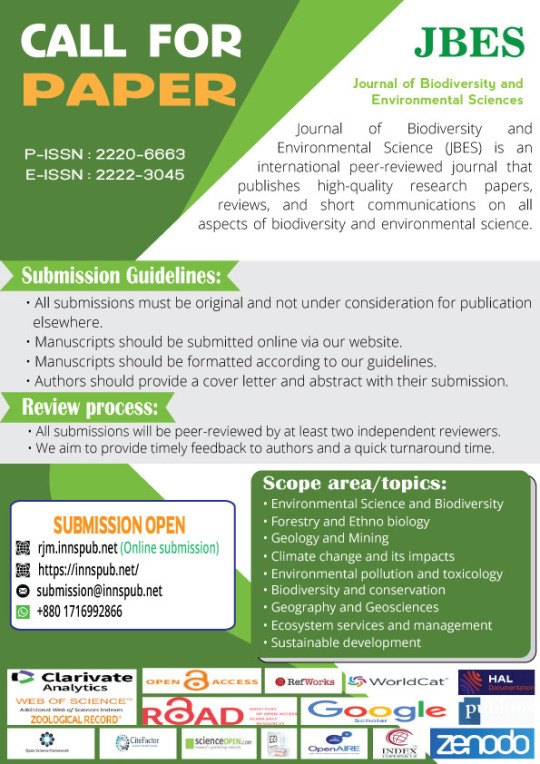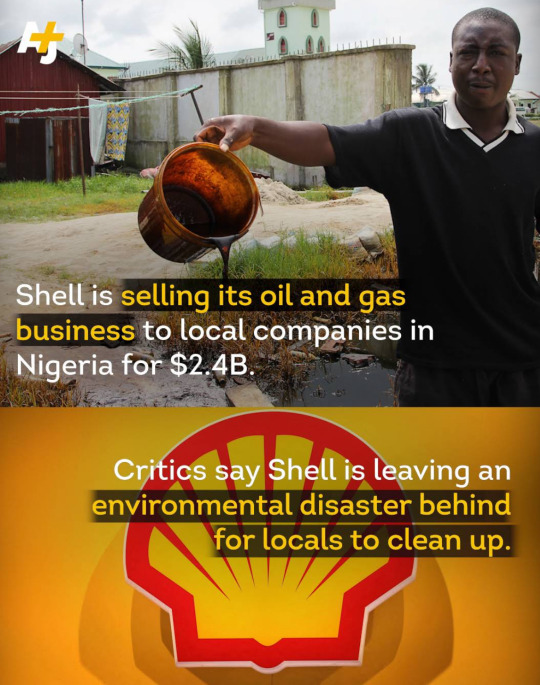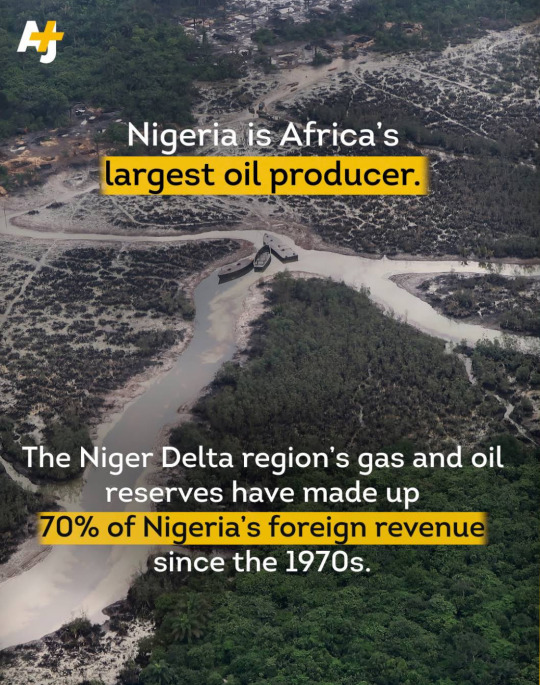#Contaminated soil
Text

Environmental Cleanup: Bioremediation as an Eco-Friendly Solution
Bioremediation is an eco-friendly approach that uses microorganisms or their enzymes to clean up environmental pollutants. It is a sustainable and cost-effective method to treat contaminated soil, water, and air. Bioremediation can be applied to a variety of pollutants, including petroleum, pesticides, and solvents. The process involves various biochemical reactions, microbial interactions, and environmental factors.
The principles of bioremediation are based on the natural processes of microbial degradation and plant uptake. Microorganisms have evolved to use various organic compounds as sources of energy and nutrients. They have a diverse range of enzymes that can break down complex molecules into simpler forms that can be utilized by the cell. In bioremediation, microbial degradation is enhanced by adding nutrients, oxygen, and other growth-promoting factors to the contaminated site. This can be achieved by various techniques, such as bioaugmentation, biostimulation, and phytoremediation.
There are several types of bioremediation techniques that can be applied to different types of pollutants and environments. The most common ones are in situ bioremediation, ex situ bioremediation, bioventing, biosparging, and bioreactors.
Bioremediation has been applied to a wide range of environmental pollutants and industries. Petroleum, heavy metal, pesticide, industrial waste, and landfill leachate contamination are some of the common applications of bioremediation.
Compared to traditional remediation techniques, such as excavation and incineration, bioremediation offers several benefits. It is sustainable, cost-effective, versatile, and non-invasive. Therefore, bioremediation is a promising eco-friendly solution for environmental cleanup.
#Bioremediation#Microorganisms#Environmental pollutants#delta remediation#Sustainable approach#Cost-effective cleanup#Contaminated soil#Contaminated water#Contaminated air#Petroleum#Pesticides#Solvents#Bioaugmentation#Biostimulation#Phytoremediation#In Situ Bioremediation#Ex Situ Bioremediation#Bioventing#Biosparging#Bioreactor#Heavy metal contamination#Landfills#Industrial waste#Sustainable cleanup#Non-invasive techniques#Versatile approach#Ecosystem-friendly solutions#Environmental sustainability
0 notes
Text
(since no one is reading my tags or other reblogs): this post has an addition. the addition is specifically about co-mingle recycling in most usamerican cities. always check your local guidelines for recycling. the point of this post was not to tell you what you can or can’t recycle, anyway. the point was that a lot of recycling gets thrown out because it’s fucking contaminated. if you can’t clean your recyclables to keep them from contaminating a whole bin, just put it in the trash. you don’t need to feel guilty about it... that's it. that's why i wrote the post.
#this is not a character judgement against him btw i'm just surprised#working at a landfill and recycling plant no matter how short a time will seriously turn you into the kind of person#who un-contaminates recycling bins#i'm in there digging plastic straws and bags and food-soiled containers out of the recycling#because otherwise the entire bin will be trashed
7K notes
·
View notes
Text


As a community scientist with Prospering Backyards, my science team is monitoring a lead contaminated yard at a house in south central. We are working on extracting lead out of certain areas using zeolites. Each month we take soil samples to the main scientists at the Natural History Museum. They are diligently working in the lab on community solutions. You cannot grow nutrient food in contaminated soil.
#science#soil#health#lead contamination#urbansoulfarmer#urban gardening in los angeles#prosperingbackyards
54 notes
·
View notes
Text
even if you believe in valuing land only for its ‘usefulness’ according to certain extractive purposes and functions (which. don’t.), how can it not be wildly obvious that a system of practices that destroy the ability of that land to continue to be ‘usable’ or ‘useful’ for those given purposes is both catastrophically stupid and also doomed
21 notes
·
View notes
Text
Holy shit, did not expect THIS to be the job where my undergrad degree might finally become relevant.
#kaesa op#please give me the soil chemistry reports I'm so normal about water tables and environmental contaminants i promise
5 notes
·
View notes
Text
started peeling some flaking paint off the ceiling and was kinda having fun peeling these big chips off and then realized that um. alex, hello? your building is from the 1930s. maybe get that shit tested for lead before getting out the paint scraper and sander.
#i'm planning to repaint the ceilings and walls over xmas/in the spring#tho also i ate fruit and veggies grown in lead contaminated soil as a kid and turned out fine so prolly nbd#(this is a joke! that i didn't end up with lead poisoning or neurological issues is nothing short of miraculous!)
2 notes
·
View notes
Text
Back to digging out the stock tank and I am displeased to find that in the dirt/rock mix I am digging out there are also lots of pieces of broken glass, fragments of plastic sheeting, AND a layer of asphalt shingles. Ok, maybe not a whole layer, but there's certainly a spot where there's a layer of shingles, though for better/worse I don't need to excavate that whole section. There is also some very, very rusted metal in there. Looks like perhaps it was a container of some kind that got flattened? IDK, it has not yielded to the mattock, yet, and a good portion of it is in the ground that I'm not digging up, so it's good and wedged in :| Also found a hefty metal ... thing ... partially sticking into the trench I'm digging, and I think I'm going to have to work around that, too. augh, ugh, etc
#angst and woe#'be careful growing food in the city because lead and all kinds of other contaminants'#yeah well guess what#people bury ALL KINDS OF SHIT IN THE COUNTRY#i am working on getting this fucking tank out primarily b/c i want more garden space BUT#fuck how nasty is the soil here??? idk!!!#could probably grow lettuce and such w/o much concern#probably ought to get a nice few inches of good topsoil in regardless
3 notes
·
View notes
Text
.
#yaknow I think if you post crap like:#*the chem spill is going to fatally contaminate the soil of the whole state for a century and kill every single pet and all the fish -#- and poison the watershed from the Ohio r. to the Mississippi r. to the Gulf*#and you don’t cite one damn source#you deserve every *source OP??* you get in your inbox#and no a twitter thread is not a source#additionally just an explanation of *this is what vinyl chloride does* is not enough of a source.#you need to be able to contextualize your claims with the chemical MSDS the concentration and the place/events#like *this much X will have Y effect in Z setting/treatment*#you're not Worry-Posting when you have like 50k followers and you're making Dire Absolute Pronouncements.#you need to think carefully about what you say and how you say it#quit fucking tagging your pithy comebacks to people concerned w ur science reporting and ethics as *modern day cassandra*#yes it’s worrisome beyond belief and yes I am worried the environmental health consequences for this will be more severe than we think#but no getting called out for lying is not the equivalent of being a modern day Cassandra
14 notes
·
View notes
Text

The Question #12 (1988)
#book club#vic sage#the question#dc comics#comics#i think about this issue often#whenever i think about soul contamination i imagine this poor man shoveling handfuls of dirt into his mouth#SOIL contamination. not SOUL contamination.#when i think of soul contamination i think of something entirely different
3 notes
·
View notes
Text
apple seeds dont have arsenic in them
#it seems to be a common misconception not one ive ever heard#but fruits and vegetables can absorb small amounts of arsenic from soil and pesticides#but it doesnt contaminate the seeds#fun fact ig lmao#and for the record unless susie was gentle enough to bite the seeds in two specifically theres 0 cyanide risk either#to my knowledge at least#simons spouting#this is a deltarune post btw noelle says something about it LMAO
8 notes
·
View notes
Text
All of my pepper plants got infected with something and every single one of them died within a week ):
#our little lives don’t count at all!#they were just starting to flower too…#I tried treating them based on what I thought it was and they just got WORSE#I don’t really know what to do#I’m wondering if I should throw out the soil for contamination
4 notes
·
View notes
Text
hey y’all I’m gonna be doing my thesis on microplastics in agricultural soils so lmk if you have any good jokes I could potentially use in my title hehe
#jack talks#physical geography#soil testing#soil contamination#microplastics#geography#studyblr#thesis#geography student#study or geography
2 notes
·
View notes
Text
Soil Contamination
Soil testing is a vital process for assessing the quality and composition of soil, while soil contamination refers to the presence of harmful substances in the soil, posing risks to environmental and human health.
Visit here: https://www.sers.net.au/contaminated-land-services/soil-testing/
0 notes
Text
Heavy Metal Levels in Abandoned Mining Soil: Zamboanga City

Abstract
The study aimed to determine the extent of heavy metal contamination of Copper (Cu) and Lead (Pb) in the soil from the abandoned mining area in Zamboanga City, Philippines using the 2017 EMB Site Characterization Guidelines. Soil samples were randomly collected from 3 meridional blocks at 2 different soil depths, 0-5cm and 20-25cm. Pb and Cu concentrations, organic matter (OM) percentages, pH and Electrical Conductivity (EC) were analyzed using appropriate equipment across sampling sites. The study revealed that heavy metal content in Block 3 exceeded the maximum allowable concentrations based on WHO standard with an average mean of 3,351.00mgkg-1 Pb and 498.67mgkg-1 Cu at 20-25cm soil depth. Moreover, at 0-5cm soil depth, Block 3 had 4176.33mgkg-1 Pb and 494.67mgkg-1 Cu. Furthermore, soil pH was strongly acidic across all blocks with values of pH 5.0 at Block 1; pH 4.7 at Block 2 and pH 4.1 at Block 3. For EC and OM percentages, results ranged from 183.33 μS/cm to 286.67 μS/cm and 1.81% to 4.05%, respectively. Using Analysis of Variance at P < 0.05, this study further revealed that there is a significant difference of Pb and Cu concentrations in 3 meridional blocks at 0.001. This indicates that heavy metal concentrations present in the soil varies in the 3 blocks. However, in physico-chemical parameters, only organic matter has significant difference in all blocks at P ≤0.01. Based from the findings, it is recommended that counter measures be undertaken to minimize further retrogressive impacts of mine tailings left in the area specifically in Block 3.

Introduction
Abandoned mining sites are significant sources of metal pollution even after centuries due to presence of contaminants in the soil. Toxic metals that remain in the soil and tailing ponds have the potential to travel and contaminate environmental habitats such as soil, water, groundwater, and air. It has the potential to alter soil texture, deplete nutrients, penetrate the food chain, create harmful consequences, and destroy ecological habitat and biological variety, including plants (Conesa et al., 2006; Baker et al., 2010; Rashed, 2010).
Soil pollution by heavy metals is a global environmental issue. Heavy metal contaminants represent a health risk to humans through food chain transfer from soils to crops, prompting increased scientific and public awareness of the issue (Alloway 1995; Oliver 1997; Chen and Lee, 1995; Chen et al., 2000) particularly in the areas close to industrial sites and in the vicinity of mining and smelting plants (Pushenreiter et al., 2005). Heavy metal pollution of soils can also be caused by the parent material's high heavy metal content (Huang, 1962; Reeves, 2003). People living in the area may not be aware of the soil pollution, according to Navarrete and Asio (2011), who cautioned that the risk posed by polluted soils is caused by a lack of awareness of people living in the area, who may not be aware of the presence of these pollutants and their health effects.
This study evaluated the concentrations of heavy metals in soil from abandoned mining area in Barangay Baluno, Zamboanga City. Soils in the surrounding mining areas are probably polluted by heavy metals which could possibly pose high health risks to the adjacent community (Li, 2014). The study area has been abandoned for a decade and this study would like to assess the possible contamination of heavy metals in the soil in the present. It was hypothesized that the soils from the abandoned mining area are highly concentrated with heavy metals. The main goal of this study was to determine the concentration of copper and lead in the soils from the abandoned mining area.
Source : Heavy metal concentrations in soil from abandoned mining area in Barangay Baluno, Zamboanga City, Philippines
0 notes
Text
Contaminated Soil Removal Bournemouth - Complete Soil Solutions
Complete Soil Solutions: Elevating Environmental Excellence in Contaminated Soil Removal
When it comes to the intricate task of Contaminated Soil Removal in Bournemouth, Complete Soil Solutions emerges as the premier choice, setting new standards in environmental stewardship. Here’s why discerning clients opt for their services:
Safety First Approach: Safety is paramount in every phase of their operations. Complete Soil Solutions adheres to the highest safety standards, implementing protocols that safeguard both their team and the community from potential hazards associated with contaminated soil removal.
Tailored Solutions for Every Client: Understanding that each project is unique, Complete Soil Solutions provides bespoke solutions. Whether dealing with industrial pollutants or hazardous substances, their approach is customised to meet the specific needs of every client.
Timely Project Completion: Time is often a critical factor in environmental projects. Complete Soil Solutions is committed to timely project completion without compromising the quality of their services. Clients can rely on them to meet deadlines and deliver results.

Choosing Complete Soil Solutions for Contaminated Soil Removal in Bournemouth is a commitment to environmental responsibility. Contact them today and experience a level of service that goes beyond conventional soil removal, ensuring a greener, safer future for all.
#complete soil solutions#css#contaminated soil removal#contaminated soil removal bournemouth#bournemouth
0 notes





